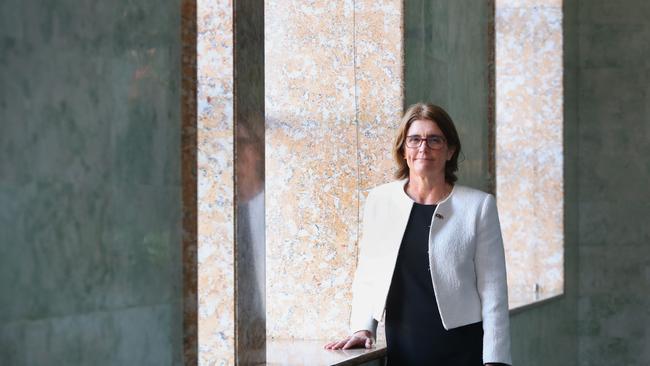
On Tuesday, Michele Bullock inked the final Reserve Bank policy statement under the governor’s name alone: official interest rates remain on hold, at least until February.
We’re likely at the terminal, maybe even on the narrow platform to a happy exit, but let’s not get ahead of ourselves.
At least Christmas will now fizz for many families, with borrowers hoping a sated central bank is done with its brutal cash-rate squeeze.
“Whether further tightening of monetary policy is required to ensure that inflation returns to target in a reasonable time frame will depend upon the data and the evolving assessment of risks,” Bullock said, a clean cut and paste from November’s narrative, when the board nudged the cash-rate target up to 4.35 per cent.
There could still be a rate-chaser, with Bullock declaring, yet again, the board “remains resolute in its determination to return inflation to target and will do what is necessary to achieve that outcome”.
They’re clearly into verbal recycling at the RBA.
Our rates are still below the leaders of the pack, like the US and Canada; Oz “homegrown” inflation, as Bullock now terms it, is higher than theirs, while our labour market is tighter.
We’ll soon learn how special we are, if at all, and if the sticky services inflation around the world settles here, suspended higher for longer by world-leading population growth.
Former RBA chief Philip Lowe is worried central banks may not have done enough to pass the initial “inflation test”, which means returning prices growth to target by late 2025.
“If central banks allow that timeline to be pushed out even further into 2026, the community will rightly say, ‘Are they serious?’,” Lowe told a global conference last week.
If high inflation persists, the OECD argues that would affect the price expectations of firms and families, making it more difficult to bring inflation down.
Given it will have been above 3 per cent in rich nations for around four years by then, it’s possible a degree of “belief scarring”, as the Paris-based body put it, will have set in.
Those elevated inflation expectations could become self-fulfilling, with rates staying higher for longer to fight prices growth, as ANZ Bank chief Shayne Elliott warned.
So, don’t take your eyes off the data, especially quarterly readings on inflation and wages, and monthly spending and employment numbers.
In any case, we’re on the cusp of a brave new monetary world, shaped by Bullock and Jim Chalmers, with the details of a fresh deal between the RBA and government on the policy ground rules imminent.
The new governor has embraced the RBA review and is changing internal processes from the new year, when the board’s schedule downshifts to eight rather than 11 meetings.
Around Australia Day, board members will attend a “policy issues meeting” to give seven RBA outsiders “insights and diversity of perspectives on the key issues relevant for policy” from senior staff, which could be relevant to a few upcoming meetings, not just the immediate one, or about the latest financial megatrends.
Then, on the first Monday in February, the board will begin deliberating for two days, not one, sifting through the lazy summer’s colada of data.
At 2.30 on the Tuesday afternoon, the board will announce its decision; an hour later, Bullock will front a media conference to provide an opportunity, she said the other day, “for journalists to clarify and probe issues raised in the post-meeting statement, better equipping them to analyse the decision for the public”.
Reporters are already primed for probing, sensing that the first interrogation in February, the People versus Bullock, will go off with a bang.







This torrid monetary era ends with a whimper.